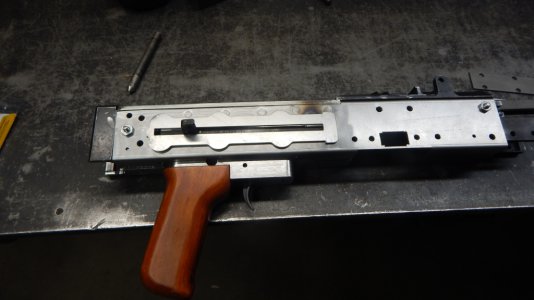- Joined
- Oct 14, 2014
- Messages
- 1,975
This thread https://www.hobby-machinist.com/thr...loctite-retaining-compound.86523/#post-775430
got me thinking about a metal bonding issue I have.
I got some Brownells hi force 44 solder and also some hi force 44 ribbon to try bonding a charge handle cover to a PKT receiver body. i have had real trouble with tig welding melting the cover and if this is avoided getting a good weld bond to the receiver.
I'd like suggestion on trying this silver solder. the mass of the receiver is 50 times the mass of the thin little cover. So the issue i see is getting both parts evenly at solder temp. Also the part needs to be clamped while heating and this is another heat sink. A final issue is the solder can not be visible when done or it will not blue evenly.
I am wondering about putting the whole assembly in an oven with little pieces of ribbon solder sandwiched between parts. other suggestions?

got me thinking about a metal bonding issue I have.
I got some Brownells hi force 44 solder and also some hi force 44 ribbon to try bonding a charge handle cover to a PKT receiver body. i have had real trouble with tig welding melting the cover and if this is avoided getting a good weld bond to the receiver.
I'd like suggestion on trying this silver solder. the mass of the receiver is 50 times the mass of the thin little cover. So the issue i see is getting both parts evenly at solder temp. Also the part needs to be clamped while heating and this is another heat sink. A final issue is the solder can not be visible when done or it will not blue evenly.
I am wondering about putting the whole assembly in an oven with little pieces of ribbon solder sandwiched between parts. other suggestions?



